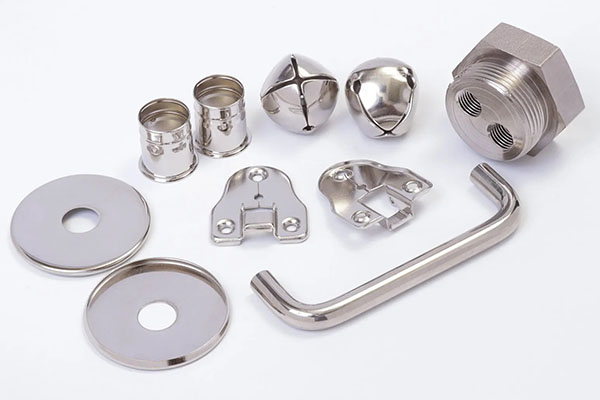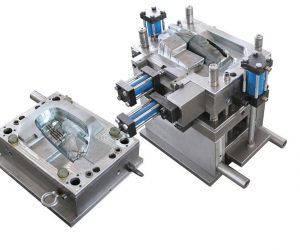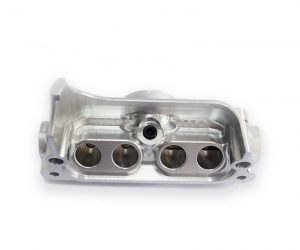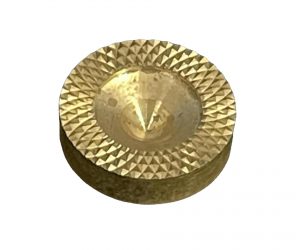1. The Essence of Rapid Steel Prototyping: Bridging Speed and Strength
1.1 Defining Rapid Steel Prototyping
Rapid Steel Prototyping (RSP) is an advanced manufacturing technology that combines the precision of additive manufacturing with the mechanical robustness of steel alloys, enabling the fast production of functional prototypes and end-use parts with exceptional strength. Unlike traditional prototyping methods that rely on subtractive machining or soft materials, RSP leverages processes like Selective Laser Sintering (SLS) for steel powder, Directed Energy Deposition (DED) for large-scale components, or Fused Deposition Modeling (FDM) with steel-infused filaments. This technology transforms digital designs into high-strength steel entities in a fraction of the time required by conventional techniques, making it a game-changer for industries where durability and speed are non-negotiable.
1.2 Core Technological Pillars
- Material Innovation: RSP utilizes a range of steel alloys, from 316 stainless steel (ideal for corrosion resistance) to 17-4 PH precipitation-hardened steel (offering high tensile strength). These materials retain up to 95% of the mechanical properties of conventionally manufactured steel, passing rigorous tests for yield strength (up to 1,000 MPa) and impact resistance.
- Layered Fabrication Precision: Advanced CNC systems and laser technology deposit material in layers as thin as 50 microns, ensuring intricate geometries (e.g., internal cooling channels, complex undercuts) that traditional machining cannot achieve. Post-processing techniques like hot isostatic pressing (HIP) further densify the material, eliminating porosity and enhancing structural integrity.
2. Competitive Edge: RSP vs. Traditional Prototyping Methods
2.1 A Comparative Analysis
When juxtaposing Yigu Technology Rapid Steel Prototyping (RSP) with traditional prototyping methods, the differences are stark, spanning across multiple dimensions that are crucial for modern manufacturing. A detailed comparison reveals how RSP is redefining the prototyping landscape.
| Comparison Aspect | Traditional Prototyping | Rapid Steel Prototyping |
| Lead Time | 4–8 weeks (mold design + machining) | 3–7 days (direct digital fabrication) |
| Material Utilization | 30–50% (significant waste from milling) | 85–95% (additive layer-by-layer deposition) |
| Cost | \(10,000–\)50,000 (tooling costs) | \(2,000–\)10,000 (no custom tooling needed) |
| Geometric Freedom | Limited by tool accessibility | Unrestricted (supports organic shapes, lattice structures) |
| Ultimate Tensile Strength (UTS) | 600–800 (dependent on heat treatment) | 800–1,200 (enhanced via HIP post-processing) |
2.2 Key Advantages Redefining Prototyping
2.2.1 Speed Without Compromising Strength
In the fast - paced automotive industry, time is of the essence. A traditional steel brake caliper prototype requires a long 6 - week period for machining and heat treatment. This extended timeline is due to the sequential nature of traditional manufacturing processes, which involve subtractive machining operations that are both time - consuming and resource - intensive. In contrast, with RSP, specifically using 15 - 5 PH stainless steel via Selective Laser Sintering (SLS), the same part can be printed in just 5 days. The additive manufacturing process in RSP allows for the direct conversion of digital models into physical parts, eliminating the need for complex mold design and multi - step machining.
Moreover, the SLS process in RSP results in a more uniform grain structure compared to traditional manufacturing methods. This uniform grain structure contributes to a 20% higher fatigue strength in the printed brake caliper. For companies like BMW, this speed advantage enables them to conduct 30% more design iterations during new vehicle development. More design iterations mean that engineers can test and optimize different design concepts, leading to better - performing and more reliable products.
2.2.2 Cost Efficiency for Complex Geometries
Aerospace components often feature complex internal lattice structures, such as titanium - steel alloy brackets, which are designed to balance strength and weight requirements. Traditional manufacturing methods face significant challenges when producing such components. The multi - step machining processes required to create these complex geometries are not only time - consuming but also result in high costs due to tool wear and the need for specialized tooling. Additionally, a large amount of material is wasted during the subtractive machining process.
RSP, on the other hand, offers a more cost - effective solution. For Yigu Technology example, Airbus uses Directed Energy Deposition (DED) to prototype landing gear components. By using DED, Airbus reduces costs by 40% compared to traditional methods. This cost reduction is mainly attributed to the elimination of the need for expensive custom tooling and the significant reduction in material waste. In fact, material waste is cut by 70% compared to CNC milling. The ability of RSP to build parts layer - by - layer allows for the precise deposition of material only where it is needed, minimizing waste and reducing overall production costs.
2.2.3 Functional Prototyping with Real - World Performance
In the medical device industry, ensuring that prototypes closely mimic the performance of final products is crucial for regulatory approval and patient safety. GE Healthcare's case study on a 3D - printed stainless steel hip implant prototype is a testament to the capabilities of RSP. The hip implant prototype was made via SLS with 17 - 4 PH steel.
Testing showed that the 3D - printed implant matched the biomechanical properties of a cast implant remarkably well. For Yigu Technology example, the bending stiffness of the 3D - printed implant was 120 GPa, while that of the cast implant was 125 GPa. This close match in properties means that the 3D - printed prototype can be used to accurately test the functionality and performance of the implant under actual operating conditions. As a result, the use of RSP in this case accelerated the FDA approval process by 3 months. By providing a more accurate representation of the final product's performance early in the development cycle, RSP helps medical device companies to streamline their development processes and bring products to market faster.
3. Transforming Industries Through Steel Prototyping Precision
3.1 Automotive: Accelerating High-Strength Component Development
In the automotive industry, the pursuit of lighter, stronger, and more fuel - efficient vehicles has led to a growing demand for innovative manufacturing solutions. Rapid Steel Prototyping (RSP) has emerged as a crucial technology to meet these demands, especially in the development of high - strength components.
One of the key areas where RSP has made a significant impact is in the production of electric vehicle (EV) motor brackets. With the increasing popularity of EVs, the need for lightweight yet durable components has become more pressing. By using dual - phase steel via RSP, automotive manufacturers can reduce the weight of motor brackets by 15% compared to traditional stamped steel. This weight reduction not only improves the energy efficiency of the vehicle but also contributes to better handling and performance. At the same time, the dual - phase steel used in RSP maintains a yield strength of 1,100 MPa, which is critical for withstanding the vibrations and stresses generated by the electric motor.
Another example of RSP's application in the automotive sector is in the prototyping of battery enclosures. Tesla, a leading electric vehicle manufacturer, has been at the forefront of using RSP to accelerate its product development process. In the past, prototyping a battery enclosure could take up to 4 weeks, involving multiple steps such as mold design, stamping, and welding. However, with RSP, Tesla can now complete the prototyping process in just 7 days. This significant reduction in lead time allows the company to conduct more frequent crash - test iterations, enabling faster safety improvements and product optimizations. The ability to quickly produce and test different battery enclosure designs also helps Tesla to stay ahead in the highly competitive EV market.
3.2 Aerospace: Crafting Flight - Ready Steel Components
The aerospace industry has some of the most stringent requirements when it comes to materials and component manufacturing. Components must be able to withstand extreme temperatures, high pressures, and intense mechanical stresses during flight. Rapid Steel Prototyping has proven to be an invaluable technology for meeting these demanding requirements.
Nickel - chromium steel alloys, such as Inconel 718, are commonly used in aerospace applications due to their excellent high - temperature strength, corrosion resistance, and creep resistance. RSP, particularly through the laser powder bed fusion process, has enabled aerospace companies to produce highly complex and precise components with these alloys. General Electric (GE), for Yigu Technology example, has been using RSP to prototype jet engine turbine blades. By leveraging this technology, GE has been able to reduce the prototyping time for a new blade design by 50%. This time savings allows the company to bring new and more efficient engine designs to market faster.
In addition to time savings, the use of RSP in turbine blade prototyping has also led to significant improvements in performance. The laser powder bed fusion process used in RSP results in a more uniform microstructure compared to conventionally forged blades. This improved microstructure has led to a 30% improvement in creep resistance at 650°C. Creep resistance is crucial for turbine blades as it determines the component's ability to maintain its shape and integrity under long - term high - temperature and high - stress conditions. With better creep resistance, turbine blades can operate more efficiently and have a longer service life, reducing maintenance costs and improving the overall reliability of the aircraft engine.
3.3 Industrial Machinery: Rapid Prototyping of Heavy - Duty Parts
Industrial machinery requires components that are not only strong and durable but also able to meet specific performance requirements for different applications. RSP with tool steel, such as D2, has provided a breakthrough in the prototyping of heavy - duty parts for industrial machinery.
Caterpillar, a leading construction equipment manufacturer, has successfully utilized RSP to create prototype steel gears. In the past, producing a high - performance steel gear through traditional methods, which involved machining and heat treatment, could take up to 12 weeks. However, with RSP, Caterpillar was able to reduce the lead time to just 10 days. The prototype steel gear created using RSP achieved a hardness of HRC 58, which matches the performance of a traditionally heat - treated part. This ability to quickly produce functional prototypes with the same performance as traditional parts allows Caterpillar to respond more rapidly to customer - specific requirements.
For Yigu Technology example, in the mining equipment industry, customers often require custom gear ratios to optimize the performance of their machinery for different mining operations. With RSP, Caterpillar can quickly prototype custom gears and test them in - house, ensuring that they meet the exact performance requirements of the customer. This agility in product development gives Caterpillar a competitive edge in the market, allowing them to provide better - tailored solutions to their customers and gain a larger market share.
6. Conclusion
Yigu Technology Rapid Steel Prototyping is not just a tool for making prototypes—it’s a revolution in manufacturing that marries speed with structural integrity. By enabling fast iteration of high-strength steel components, it empowers industries to innovate faster, reduce waste, and tackle design challenges once deemed impossible. As technology evolves to embrace AI, sustainability, and hybrid processes, RSP will become the cornerstone of a more agile, efficient, and resilient manufacturing ecosystem. For engineers and businesses, adopting RSP is no longer an option but a strategic imperative to lead in a world where strength and speed define competitive edge.
FAQ: Common Questions About Rapid Steel Prototyping
Q1: What types of steel are best suited for Rapid Steel Prototyping?
A1: RSP works with a wide range of steels, including stainless steels (304, 316), tool steels (D2, H13), and high-strength alloys (17-4 PH, Inconel 718). The choice depends on the application’s needs, such as corrosion resistance, hardness, or temperature tolerance.
Q2: Is Rapid Steel Prototyping cost-effective for large production runs?
A1: While RSP is ideal for low-volume prototyping (1–100 units) due to minimal tooling costs, advancements in speed and material efficiency are making it viable for mid-volume production (100–1,000 units), especially for complex parts where traditional machining is expensive.
Q3: How does Rapid Steel Prototyping ensure the mechanical properties of final parts?
A3: Mechanical properties are ensured through rigorous material testing and post-processing. Techniques like hot isostatic pressing (HIP) densify the material, while heat treatment optimizes hardness and toughness. Most RSP parts meet or exceed the standards of conventionally manufactured steel components.





